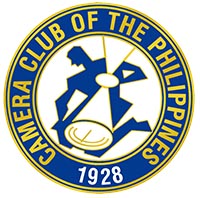Our Story
Beginnings
On August 19, 1928, the club was formally inaugurated in the office of one of the founders, Jose M. Ocampo, at the Paterno Building beside the then Santa Cruz (now MacArthur) Bridge just off Plaza Goiti in Manila.
1928 – Formal Inauguration of the Club
It was on a Sunday morning in 1928 when eight gentlemen met to discuss the formation of a photography club in Manila. Manuel R. de Cartagena, a photo dealer, initiated the meeting and invited Vicente Mills (a government official from the Bureau of Lands), Luis Guzman (a professional photographer), Jose M. Ocampo (a broker), Bonifacio S. Araullo (a bank executive), Federico Montes (a lithographer or printer), Juan Mencarini (a linguist) and Don Miguel Heras (a lawyer of from a family that owned a shipping company).
These gentlemen, engaged in varying occupations, had one thing in common – the love of Photography. Shortly after, they designated the eldest among them, Juan Mencarini as president and Bonifacio S. Araullo as secretary. In the succeeding meetings, they invited other photography enthusiasts to join the group. Later, a constitution was drawn up and they adopted the name “Camera Club of the Philippines”.
On August 19, 1928, the club was formally inaugurated in the office of one of the founders, Jose M. Ocampo, at the Paterno Building beside the then Santa Cruz (now MacArthur) Bridge just off Plaza Goiti in Manila.
Of Darkrooms and Club Quarters
The club maintained its own quarters, first at the second floor of the Arguelles Building on Rizal Avenue, Manila. It had no less than two well-equipped darkrooms with running water and all the facilities for developing, copying and enlarging photographs. Back then, the club members met almost every afternoon and talked about photography and planned activities, and yet practically no one used the darkrooms. By August 1933, the club quarters were transferred to the Argellies Building on Dasmariñas Street. No darkroom was installed there, but members were able to shoot portraits occasionally.
Finally, in 1934, the club decided to give up its quarters mainly due to an apparent lack of interest from its members and officers. For many years thereafter, the club contented itself to meet regularly at monthly dinners where all club activities where discussed and decided. These monthly dinners have continued up to the present.
It was in the late 70s that the club decided to set up an office secretariat in spaces borrowed from members until 1994, when it finally acquired a condominium office in Makati City. But even then, with their fast-paced lives coupled with traffic and parking problems, the office remained just a simple office and not a clubhouse or a gathering place that some members dream about where they would meet regularly and talk about photography.
In 2008, the club inaugurated the Camera Club of the Philippines Center or CCP Center for short. It is located at the 5th Floor of the Waltermart Mall along Pasong Tamo, Makati City. Although not used as the venue for its monthly meetings, the CCP Center showcases works of members placed on exhibit. Seminars, lectures and workshops on various aspects of photography are also offered there by members to the general public.
1933 – Club Quarters located in Arguelles Builiding
1994 – Acquired Condominum Unit in Makati City
2008 – Inaugurated CCP Center in Waltermart Mall, Makati City
2009 – Monthly Meeting venue moved to Rockwell Club, Makati City
Photo Excursions
The present day “On-The-Spot” or OTS competitions are descended from what used to be called “picnics”. These were photographic excursions which the club held from its earliest days but which apparently did not stress the aspect of competition as did the present OTS events. Back then, members were often seen eating, drinking and talking about photography more than taking photos themselves. These “picnics” were actually held at least once a month, usually outside Manila. Practically all towns within easy reach by car were invaded by club members during weekends and holidays – Pagsanjan, Marilao, Lipa, Taal, Batangas, Obando, Antipolo, Cavite, Malolos, Pasay, Parañaque, and many smaller towns and barrios. Some were two-day affairs which necessitated carrying quite heavy baggage before the era of miniaturization. The smallest cameras used by members in those days were the 120 sized film (2 ¼” x 3 ¼”). Aside from the club outings, smaller groups of members sometimes went on their own photo expeditions, as they still do today.
One of the most memorable of these outings was a foray to Tagaytay during the club’s very first year. In the words of Don Miguel Heras:
“The most memorable Club picnic was to Tagaytay held one Sunday in the latter part of 1928. To go to Tagaytay then was not the easy forty-minute ride that it is today. To reach Tagaytay, you had to go to Tanza by bus or car. From Tanza to Tagaytay proper, you had to walk or ride small ponies for another three hours through tortuous trails. The picnic was organized by the Club but many others joined including personnel from Kodak Philippines (which by the way was established in the Philippines also in 1928 – RMP), Botica Boie, Botica de Santa Cruz and other commercial firms. In all, over a hundred persons made up the party. It left early on that Sunday morning starting from Plaza Goiti in four buses and many cars. We arrived in Tanza around nine o’clock after making arrangements for mounts. For those who did not want to walk, they started half an hour later on the trails leading to Tagaytay. Many fell from their ponies, some got lost on the way, but our destination was finally reached around half past twelve. Unfortunately there was fog over Taal Lake so that the magnificent view which was the purpose of making the long trip was not visible. Still, since we were there, cameras and tripods were taken from their cases and picture taking started. The sky continued to be overcast and soon a drizzle began to fall.
As far as we know, nobody was able to take a good picture. Since the weather continued bad, it was decided to start back at half past one. The same mishaps in going happened on the return trip. Riders were again thrown from their mounts, others got lost again. Finally everybody was accounted for and the trek back to Manila started. The party arrived back on Plaza Goiti at around five o’clock where the picnickers dispersed.
Everybody was dog-tired, nobody had taken any decent pictures, but still, all in all, it was considered a very successful picnic for the many incidents that befell all who participated because it gave us something to talk about for many months after the picnic.”
Today, the OTS’ are a regular part of the contest calendar with at least four venues scheduled within the year. Ideally, two of these venues are within Metro Manila to make sure that all members have at least two OTS events not too difficult or too expensive to join. The other two OTS venues are often outside Metro Manila, as far as Batanes or elsewhere in the Philippines. In 2006, the club began an optional OTS outside the country. Hong Kong, Singapore, and cities in Cambodia, Thailand and Vietnam have been among the places visited. In 2014, the club went to the Kansai region in Japan, the first country visited outside of the ASEAN region.
Club Honors
Today, the competition continues and is now called the “Masters Cup”. Entries are still scored from 1 to 5 by a panel of judges, a typical composition of which is a photographer, an artist (of any medium), an academician and a knowledgeable layman.
1936 – Establish Formal Competition
1950 -First Best Picture of the Year Award
1953 – Contests judged by non-members
1954 – First Colored Transparency Award
1976 – Wrigley Cup sponsored by Luis Garcia
1984 – Shell Cup sponsored by Jaime Zobel de Ayala
1995 – Kodak Cup sponsored by Kodak Philippines
Since its foundation, members talked of awarding prizes for the various competitions they held. With so many conflicting ideas on how to go about the competition proper, it was not until 1936 that the club finally adopted a set of stable rules to govern its annual competition. The Winner for the best photographer of the year was awarded the club’s highest honor in the form of a plaque. Performance was based on how the members fared in the various monthly competitions during the year, measured by the accumulated scores of his entries. The first plaque winner was Jesus Litonjua on that same year.
Fourteen years later, in 1950, on the suggestion of Dr. Legarda, another award was added to the competition. This was the medal for the Best Picture of the Year. The award was selected through a series of eliminations during the monthly contests at which the members themselves scored all the entries on a scale of 1 to 5 with only those averaging a score of 3 or higher qualifying for the final annual judging. Dr. Gregorio B. Sison was the first Medal Winner. Then, in 1953, in what can be regarded as a departure from the tradition of members scoring the entries, a panel of judges was invited during the club’s silver anniversary. These judges were officers of several other photographic organizations, both professional and amateur.
In 1954, upon the petition of many color enthusiasts, a third award was created called the Color Transparency Award. The trophy was a 5” by 7” laminated certificate for the photograph, the winner of which was judged similar to that of the medal award. Dr. Felix B. Perlas was the first winner of this award.
Thus from 1936, there were only 3 major awards given by the club – the Plaque for the top photographer of the year, the Medal for best picture (black-and-white print) of the year, and the Color Transparency Award for the best color transparency of the year. That was up until the seventies, when color photography became popular. Color prints began to constitute a separate division.
In 1975, the awards for Best Picture of the Year were given to the 3 divisions consisting of black-and-white, color transparency and color print. No award for the Photographer of the Year was given but similar to the events during the silver anniversary, the year-end competitions were judged by a non-member panel of judges – Redentor Romero, Alfredo Roces, Philip Monserrat, Francisco Mañosa and Dick Baldovino.
The following year, Luis Garcia, a member and then president of Wrigley Philippines, Inc., sponsored trophies for the major awards. Dubbed the ‘Wrigley Cup’, 3 large silver trophies were provided with the top winner conferred the grandiose title of the “Master Photographer of the Year”. This award and title was the direct descendant of the historical Plaque award given to the photographer accumulating the highest number of qualifying points in the various contests throughout the year. The Wrigley Cups were awarded from 1976 to 1983. It was in 1976 also when the practice of using non-member panels of judges became permanent.
Through the efforts of member Jaime Zobel de Ayala, the subsequent trophies were sponsored by Filipinas Shell (the Shell Cup, 1984), and the Ayala Corporation (the Ayala Cups, 1985 – 1994). From 1995 up until 2005, Kodak Philippines sponsored the awards (the Kodak Cups).
Today, the competition continues and is now called the “Masters Cup”. Entries are still scored from 1 to 5 by a panel of judges, a typical composition of which is a photographer, an artist (of any medium), an academician and a knowledgeable layman. Members are given full credit of whatever score was given; departing from the traditional zero if the average score is below 3.0. Digital photography has forced the club to give up color slide contests. Recognition is given to the following: top 10 photographers, photo and photographer of the year awards for color print, black-and-white, single-shot color print and on-the-spot, top 3 conference winners (given during the first 3 quarters of the year) and of course, the most coveted distinction as “Master Photographer of the Year” for the top photographer.
Social Activities
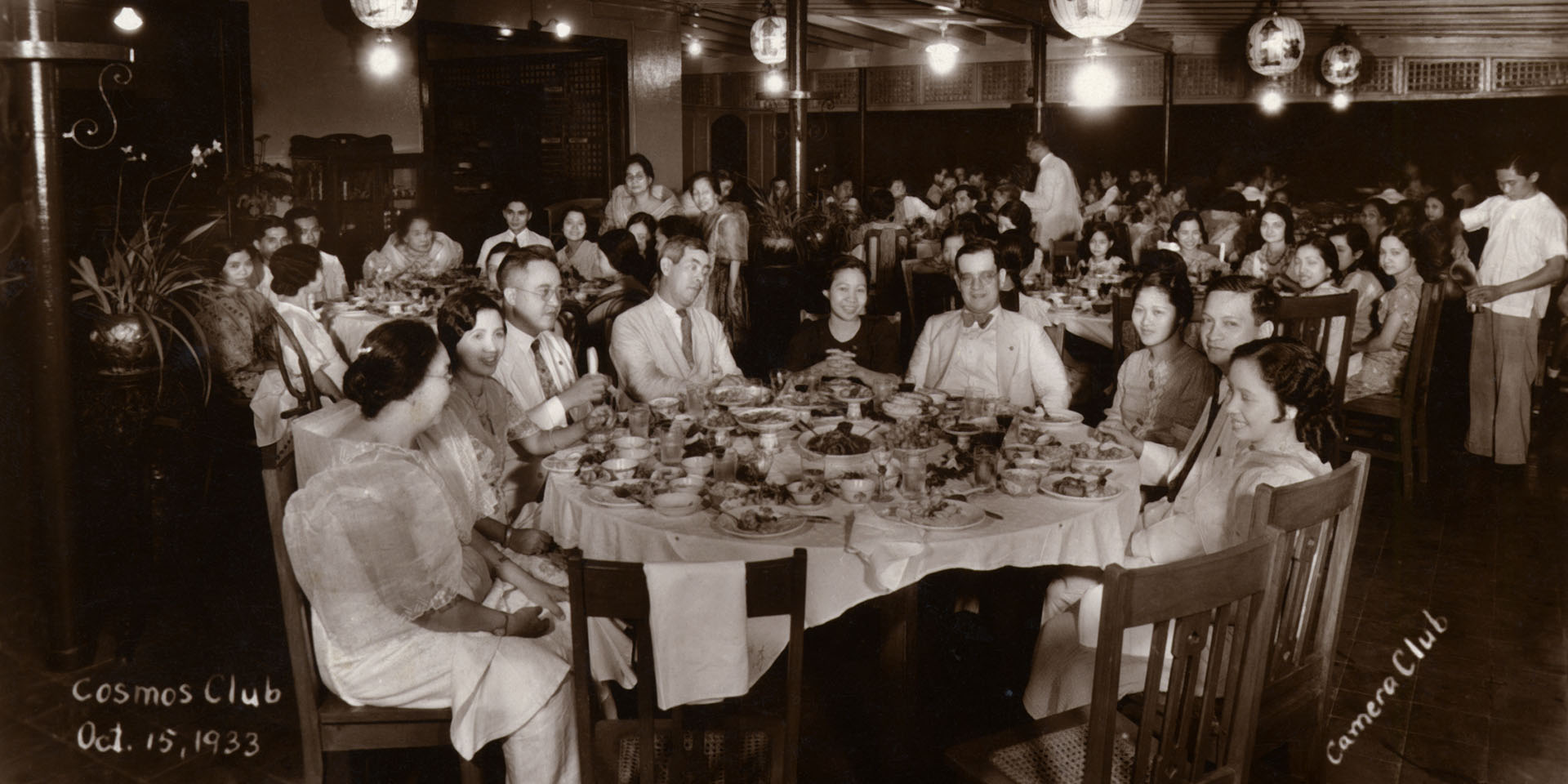
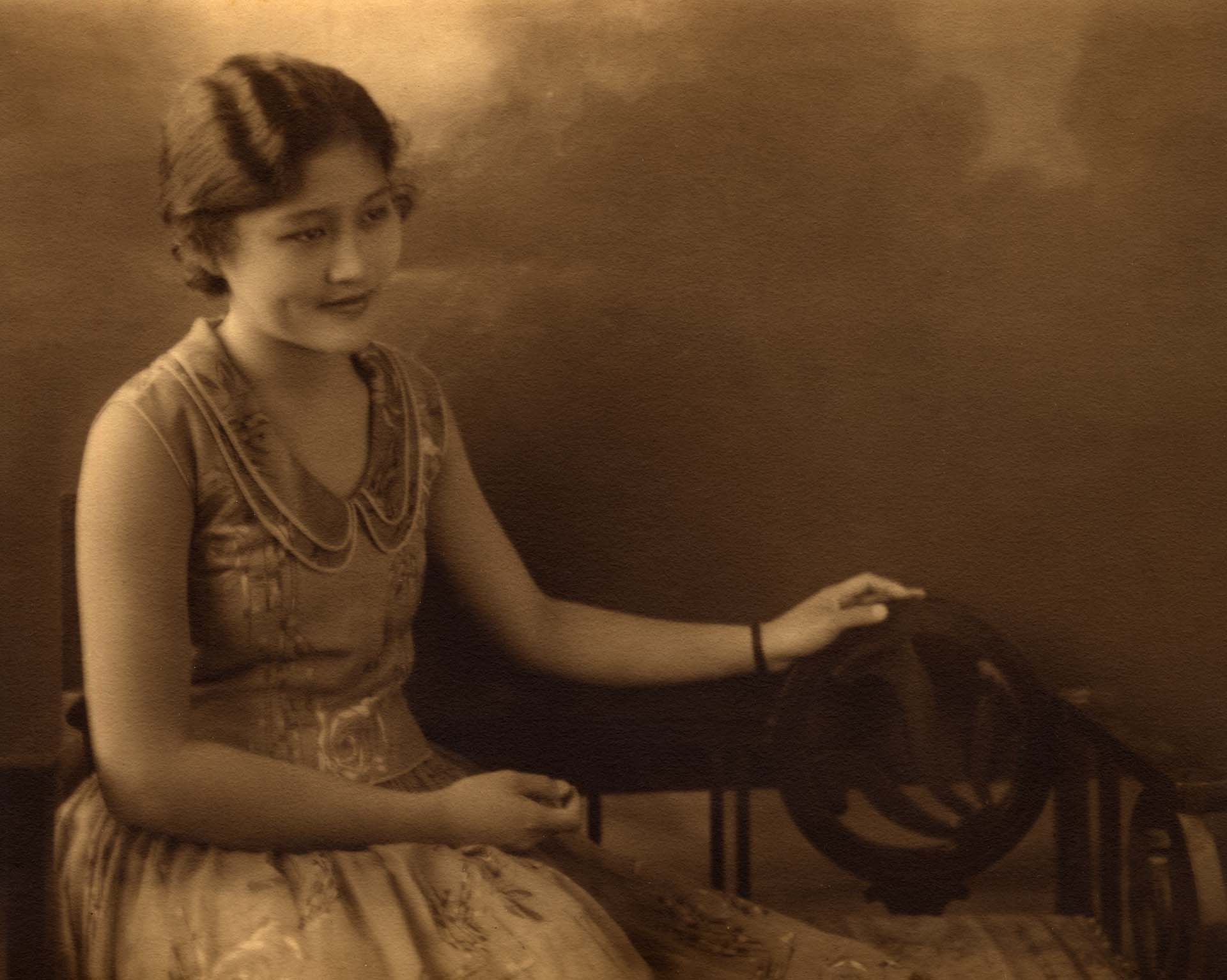
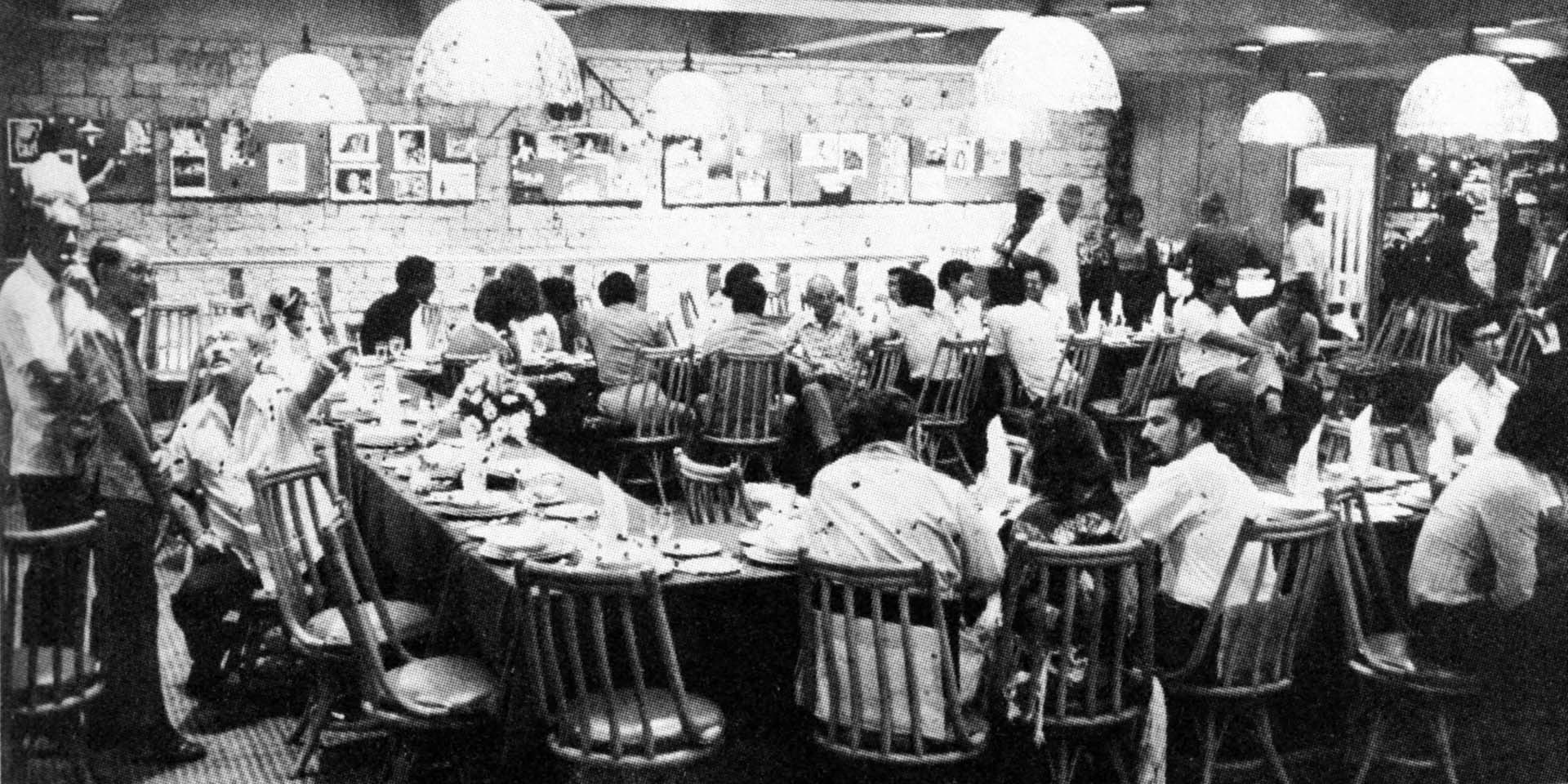
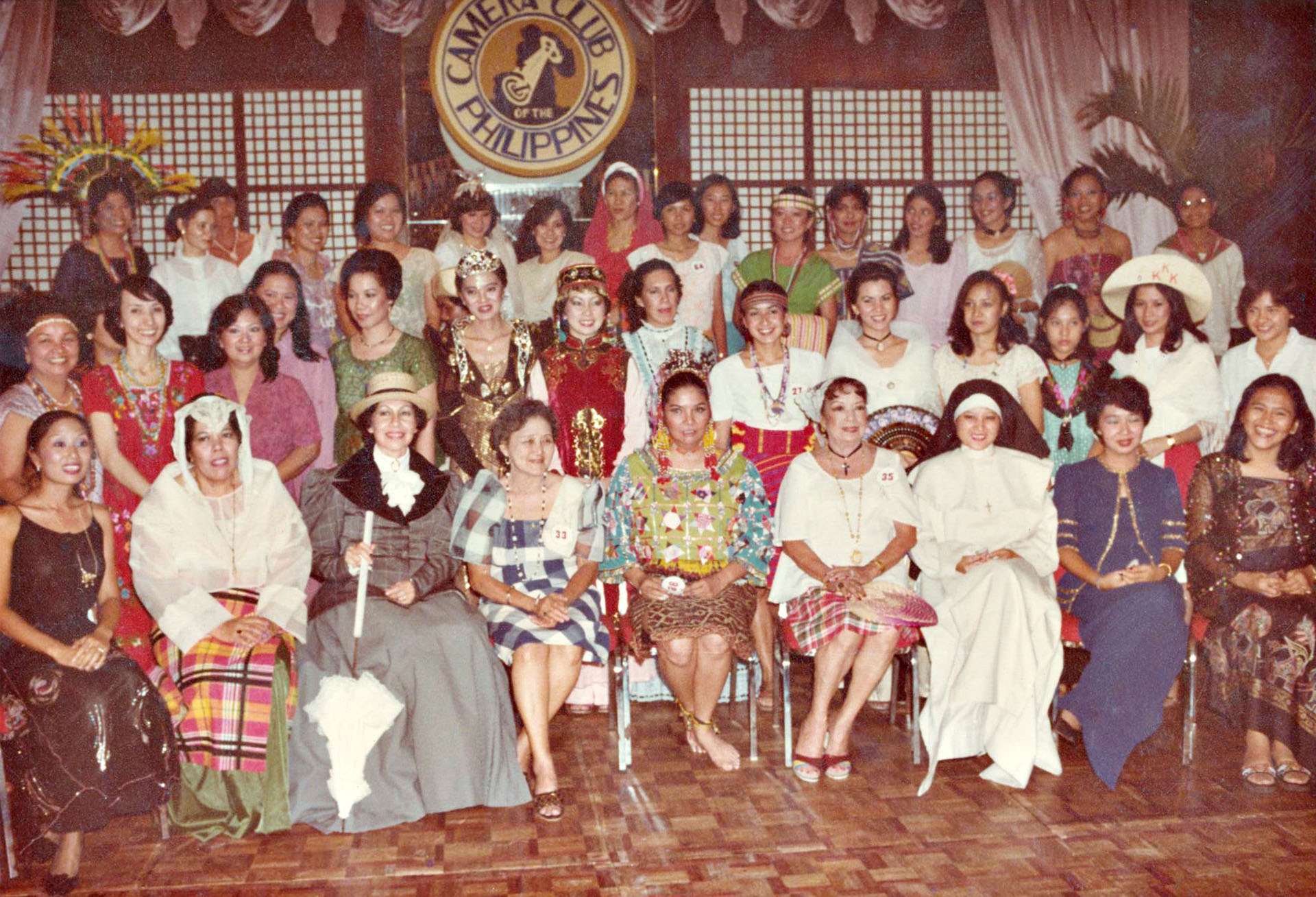
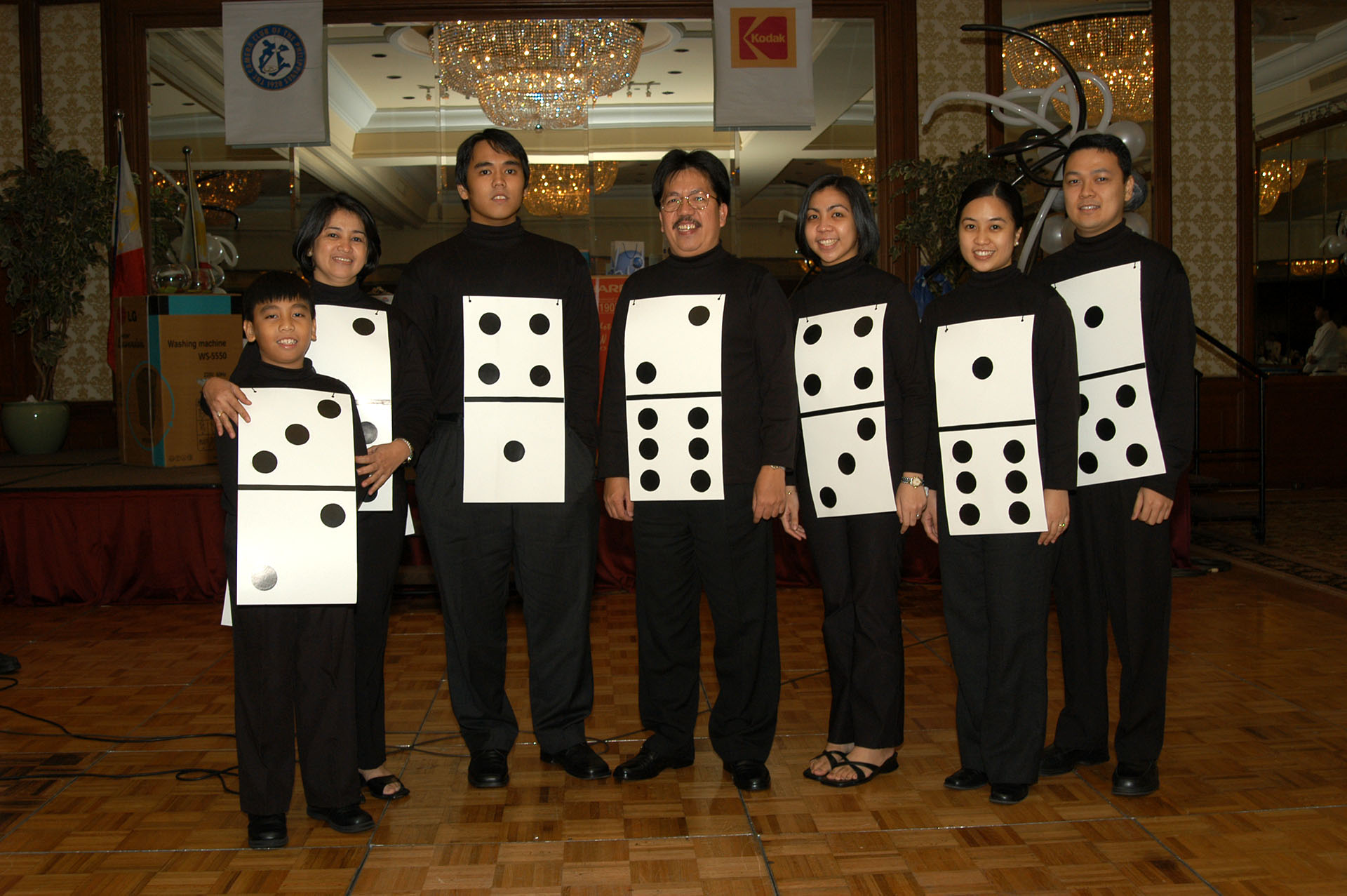
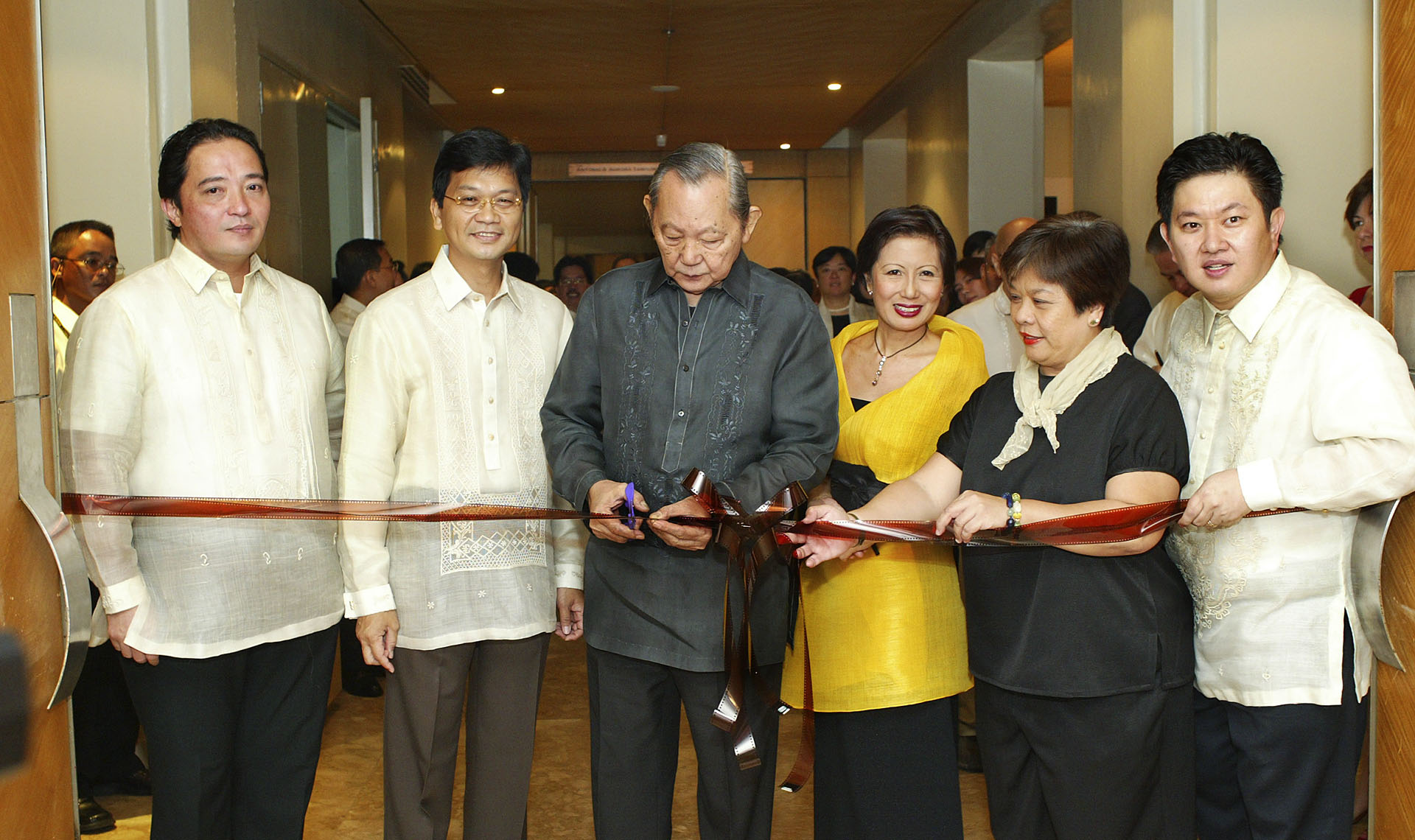
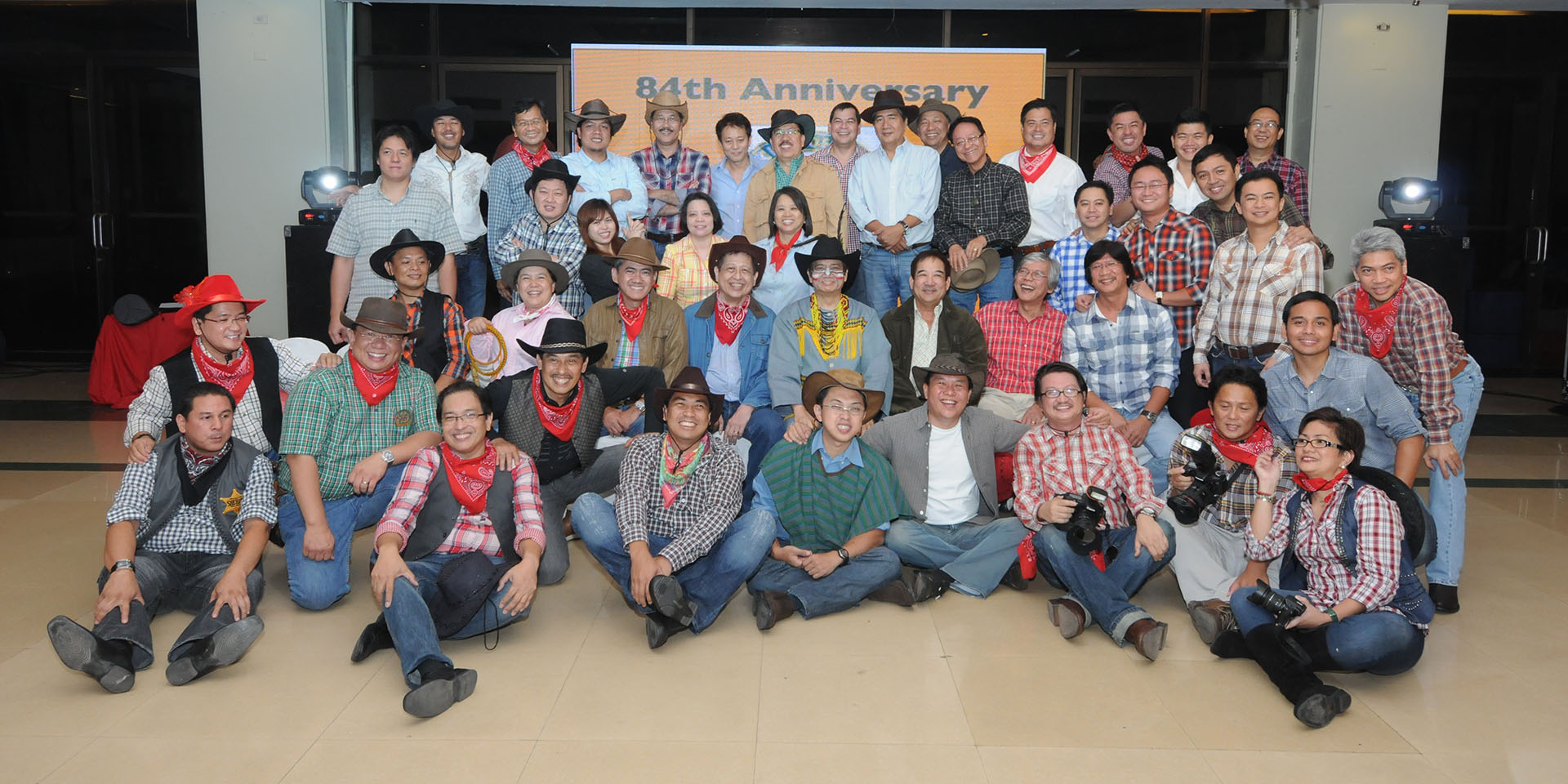
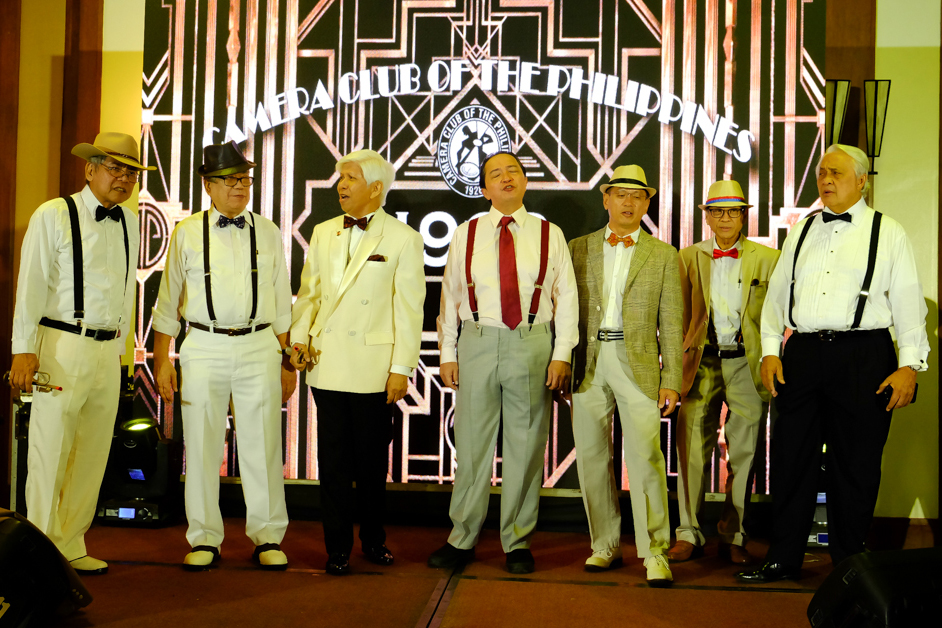
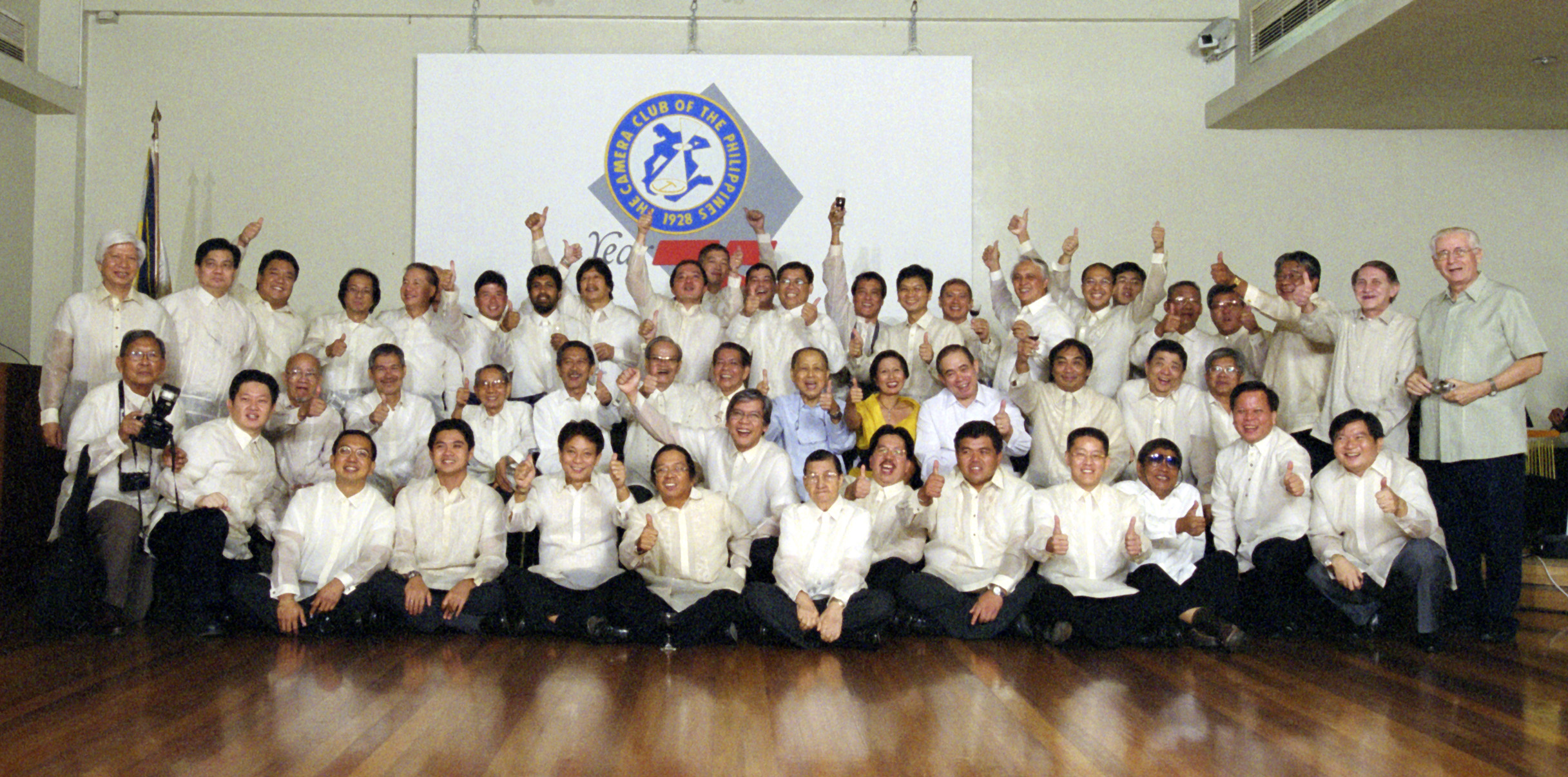
The club admits men and women as members. But for most of its history until the late 1970s, the club was a strictly stag society. Social activities with ladies, however, became important indirectly through portraiture sessions, which has been a major activity from the very beginning.
One of the founding members was Luis Guzman, a professional photographer. He had just closed his Filipinas Studio then, but coached members to produce portraits whose quality rose above the snapshots they had been taking. Some began to produce works at par with professionals. Many prominent “society-girls” of the 30s where invited for photos in the well-equipped gallery in the club’s quarters to the delight of the members.
It was in connection with this activity that Ms. Flora Ongpin was elected the only honorary member of the club. In the beginning, recalled Don Miguel Heras, it was rather difficult to invite young ladies for the club’s Sunday sessions of portraiture. Ms. Ongpin was the first model, and she turned out to be very helpful in convincing her friends and others to come to the gallery for a sitting.
Among these ladies were the famous Magalona beauties, Susan and Betty, Pacita Zabarte (mother-in-law of an eighties member Joe Matute), Carmen Manahan (sister of Dr. Antonio Manahan and sister-in-law of Freddie von Kauffman, members in the seventies), Alicia de Santos (sister-in-law of the late Niding Maloles), Elenita Hernandez, Concepcion Soriano, and other well-known society beauties.
Later in 1937, Ms. Ongpin married Don Miguel and continued her involvement in the club even when she became a widow. She was considered a Lifetime Member of the club until her death.
From the words of Don Miguel:
“The ladies who came for sittings never regretted it. As a reward for their tiring experience, they were given the best of the photographs made of them. It was not unusual for each sitter to receive from all members who had taken her picture, two, three or even four dozen very good portraits ranging in size from 8 x 10 to 11 x 14 inches.
These young ladies in return used to invite the members of the Club to their social gatherings and thus it came about that without deliberately planning it the social side of the Club became a very important activity.”
Don Miguel also recalled a number of other social affairs, particularly a cocktail party given by the club for Prince Purachatra, brother of King Pradhipadok of Siam. There was also a dinner to honor Nicholas Has, a well-known American Photographer of the thirties, and a visit to Malacañang Palace where members took photographs and movies of Misses Cynthia and Alice Davis, daughters of the then American Governor General of the Philippine Islands Dwight Davis.
The first anniversary dinner was held in the storied Fiesta Pavilion of the Manila Hotel in 1929. It was a lavish affair. Aside from the members’ wives, the ladies present who had sat for portraits were given an 11” by 14” hand-colored portrait in an expensive mount as souvenirs. They were also given a vest pocket camera (127 film reels) covered with silk.
In the years that followed, these dinners were held in different places; some were formal, others informal. This became the one traditional social event which was definitely not stag; married members brought their wives, while bachelors brought their lady friends and relatives. After the Japanese occupation, dinners were held in such places as the Bay View Hotel, the Manila Hotel, the Avenue Hotel, where the club celebrated its Silver Anniversary in 1953, the Manila Polo Club and other places. The Golden Anniversary in 1978 was back in the Fiesta Pavilion of Manila Hotel. It was a costume party which tried to bring back the flavor of the 1920s when the club was born. More recently, in the less difficult years, the annual affair has been held in the major hotels in Makati, some in fancy and fanciful costumes, with hilarious skirts and musical presentations, emphasizing participation by families including children and grandchildren.
Today, the anniversary dinner is held on or near August 19th. As before, members come in themed costumes together with their family and friends. The highlight of the anniversary is the induction of lifetime members, as well as recognition for other members who have celebrated their 5th, 10th, 15th and 20th anniversaries with the club.
Seminars, Exhibits and Publications
In 1932, during one of the annual fairs held at the Centro Escolar de Señoritas, the club took a booth and exhibited over forty photos. The exhibit created a sensation because of the sizes of the photographs ranging from 11” by 14” to 20” by 24”, and because more than half of the exhibition consisted of professional-caliber portraits of well-known society-girls of that time. Some individual members also exhibited in foreign salons of Europe and the United States, among them were Vicente Mills, Federico Montes, Bonifacio S. Araullo and Don Miguel J. Heras. Mills was even a finalist in the Kodak International contest held in the thirties.
From the postwar years until the seventies, the club rarely held public exhibitions. One of those rare occasions was in connection with the national photo contest held by the Filipino Photographic Dealers Association in 1950. While the club did not participate in the contest, it was assigned a space where all members were able to exhibit one photo each.
For the first time, in 1965, the then thirty-seven year old twenty-eight member club issued a publication called Annual 1965. It contained a selection of works by the members, some taken way back in the 1920s. In spite of such occasional forays at public exposure, it appeared that the club, for the most part, kept to itself.
The mid-seventies were a turning point. Some relatively new members then noticed that while the club was nearing its golden anniversary, it was still small and inward-looking. It was then that a genuine effort to modify the club direction took place.
In August of 1975, the first issue of the Viewfinder, the club’s magazine, was born. Through the special efforts of then new member Franco Patriarca, a second issue was published in December of the same year. Also, a calendar for 1976 featuring twenty-four of the seventy contest qualifiers from a total of two hundred twenty four black-and-white entries was printed. A calendar with black-and-white photos has become a traditional publication every year. It was also in 1975 under the presidency of Feliciano Ferrer that the idea of incorporating the club was conceived. New enthusiastic members were recruited, and the year ended with the club roster growing to forty five members.
The following year, in 1976, the Viewfinder became a quarterly publication. It was also this year when the incorporation of the club was completed, and for the first time, a Board of Directors headed the club. By November of the same year, the club held an exhibit of its photographs at Rustan’s Cubao, one of Manila’s then busiest department stores. Following the success of the first black-and-white calendar the previous year, the second edition of the calendar was published. By the end of the year, the club seemed to be changing “from a strictly closed exclusive company of weekend snappers to a dedicated band of contemporary photographers, improved in skills, producing more quality photographs that appeal to a wider audience; works of sustained interest and even exploratory experimentations unheard of in amateur circles” according to Franco Patriarca (who became the president in 1977).
The succeeding year, the club conducted a photography symposium for Wonderbooks, a division of Mondragon Industries, distributors of Time-Life Books. The symposium was conducted by members Vicente C. Valenciano and Ernesto T. Echauz, assisted by a panel composed of Eufrosino Q. Camarillo, Emmanuel Arriola and Franco Patriarca. No less than one hundred fifty people attended. It was another milestone in the desire of the club to be more “relevant” to its art and to society.
In 1983, and again in 1988, the club mounted a major exhibit entitled “Vintage and Classic Camera Exhibit” in the Cultural Center of the Philippines, which featured the largest collection of rare cameras and photo equipment ever assembled in the Philippines.
In 1985, the club contributed to a traveling photo exhibit intended to “sell” the Philippines in the United States. In 1988, photo exhibits took a new level of significance in a joint effort with the Metropolitan Museum of Manila when a selection of the club’s photographs was organized to teach the principles of aesthetics and composition, especially through the efforts of club member Felice Sta. Maria. This exhibit, entitled “Filipinas Nating Napakaganda,” was transported all over the Philippines and shown to thousands of school youth. In 1990, the club mounted “Kayumanggi: Kulay Pilipino,” a collection of the different faces of the Filipino at the Metropolitan Museum of Manila, and towards the end of that year an Ecology Exhibit in the Cultural Center of the Philippines, entitled “Land, Sea, Sky.”
In 1987, the club undertook a major educational effort in its two-day workshop entitled “Photo Lessons from the Masters” held at the Asian Institute of Management.
In 1997, the club contributed photographs for a calendar that raised funds for a foundation helping children with cancer. Similar contributions helped another charitable foundation called “Hands On Manila.”
1932 – First Exhibit at Centro Escolar de Señoritas
1965 – First Publication called Annual 1965
1975 – First Issue of Viewfinder published
1983 – Vintage and Classic Camera Exhibit
1987 – Started Photo Lessons with the Masters Seminars
1988 – Vintage and Classic Camera Exhibit (2)
1988 – Filipinas Nating Napakaganda Nationwide Exhibit
1990 – Kayumanggi: Kulay Pilipino Exhibit at the Metropolitan Museum of Manila
1990 – Land, Sea, Sky – Ecology Exhibit in the Cultural Center of the Philippines
2000 and Beyond
In its 75th year in 2003, the club donated more than a hundred books on photography to the Filipinas Heritage Library in Makati City and mounted a major three-month long photo exhibit in the National Museum of the Philippines, the first ever in that museum. The Fookien Times organization published a book, The Philippine Yearbook 2004, which was devoted entirely to the club. Not long after, the club published its own coffee table book entitled simply ‘The Camera Club of the Philippines’.
In August 2007, the club marked the beginning of its 80th year with a major photo exhibit at the Ayala Museum. Entitled “Elements,” the exhibit consisted of the members’ images of Earth, Wind, Water and Fire. The exhibit pioneered by displaying only three large framed prints and three standing photo installations, and nearly three hundred photographs continuously displayed one-by-one on 10 large LCD flat screen television monitors. Public lectures on various aspects of photography accompanied these exhibits. The exhibit was also brought to various SM Supermalls around Metro Manila and Cebu from October to November.
In 2008, the club mounted an exhibit in the King Juan Carlos Center in New York University, entitled “22/44: Dimensions of Hope,” curated by Dr. Florina Capistrano-Baker. Another exhibit that traveled to various local malls, “Faces of Light,” helped the Department of Energy call attention to and promote energy conservation. “Visions in Red,” a fundraising exhibit, was also mounted to help the Philippine Red Cross in 2008 and 2010.
The year 2009 saw the beginning of a partnership between the club and the Philippine Cancer Society with its annual “Best Dressed Women of the Philippines” fund raising event. The club helps in capturing and exhibiting portraits of the Society’s sponsors and awardees, an important element of the affair. On the same year, the club mounted an exhibit in the Malacañang Museum, with the Philippine Heritage Society. The exhibit showcased various aspects of the national culture and heritage. To celebrate its 81st anniversary in August that year, the club mounted an outdoor exhibit at the Eastwood Mall in Libis, Quezon City. Entitled “81/81”, it displayed 81 photos in 8’ by 4’ sized prints, able to withstand the weather for several weeks.
In 2013, the club’s 85th year, the club mounted the “Wallables,” a term coined by then president Billy Mondoñedo to refer to “photos that are mounted on walls” which were personally selected by the well-known visual artist Lao Lianben. In April and May 2015, another major outdoor exhibit of large photos promoting Philippine tourism was displayed by the Philippine Embassy in Thailand in a busy commercial area in Bangkok.
Today, exhibits, publications, lectures and workshops on photography are among the regular activities undertaken by the club. The partnership with the Philippine Cancer Society continues to be the club’s main community service activity. The club has also launched this website to display monthly photo winners as well as club news, making the club globally reachable by its members abroad as well as the entire online community.
